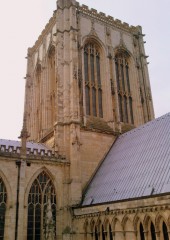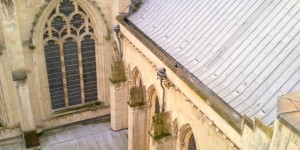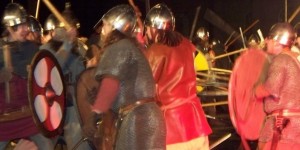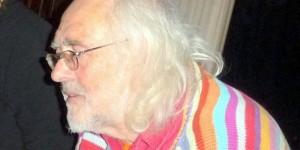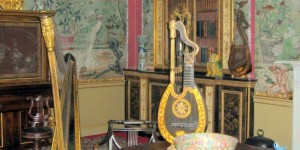In the last article we shed some light upon the previously unexplored world of 1930s archaeology with a look at the approaches used by two archaeologists as they worked on the same site, a Hovitos temple deep in the Peruvian jungle. These men were Dr Henry 'Indiana' Jones Jr, an American from America, and Rene Belloq, a Frenchmen who is believed to have held no qualifications in his chosen field. Despite his devotion to archaeology, and his many successes within its research, it was only the fact that he worked during the day that prevented him from being labelled a 'Night-hawk' by his peers. A troubled and introspective loner, Belloq's quest for wider approval from the archaeology community often led to him falling in with less than reputable employers, as we shall see below.## 1936: Tanis, nr Cairo, Egypt: The 'Ark of the Covenant'The second site we shall look at was excavated in the same year as the previously described work at the Hovitos Temple. This in itself is indicative of how less comprehensive research was in the 1930s, with archaeologists able to undertake multiple projects within a year, often with one leading on from the other with a gap of only a few days. The objective on this occasion was to locate the lost city of Tanis, Egypt, which was believed to be the final resting place of the legendary Ark of the Covenant.
Dr Jones became involved in this project at the behest of the American government, who wanted to create a new Egyptology museum but were not prepared to fund more than one man in field research. Belloq's involvement in the Tanis excavation came about through contact with an enthusiastic collector of Hebrew artefacts, A. Hitler of Berlin, who respected Rene's methodical and sensitive approach to archaeology. In marked contrast to the Hovitos temple project, however, this time Belloq made some critical errors in organising his group.
As explored in the last issue it seems that Dr Jones had found the pre-excavation stages of a project challenging. However, despite the fact that all he had packed for this trip was a gun, upon arrival in Cairo, he had little trouble in recruiting local archaeologists to assist him when he made for Tanis. Belloq, by way of contrast, brought the German army. This prompted accusations expressed in the press of being heavy handed and taking a colonial attitude to the site, which unwittingly aided Dr Jones who, when compared with Belloq and his Wehrmacht, emerged as something of an underdog.
After some bad dates, which made him begin to regret bringing his ex along on the project, they headed for Tanis where Belloq and his team had made impressive headway. In true Night-hawker fashion Dr Jones waited until dark, and then began to dig a little way from the main excavation. The temple in which the Ark was stored was quickly located, and preparations were made for its removal. Unfortunately at this point Henry was discovered by Rene who, incensed at Jones' employment of the underhand methods of which he was so often accused, sealed Dr Jones in the temple to think about what he'd done.
Having considered his position Henry escaped from the Temple and set off in pursuit of the Ark and Belloq in order to apologise and make amends. However, owing to a series of misunderstandings arising from Jones' lack of language skills, which had been problematic before (see the previous article), the soldiers guarding the Ark died and Dr Jones found himself stealing the truck it was in, running Rene off the road as he went. Belloq, possibly the only archaeologist in history to count a U-Boat as part of his inventory, managed to retrieve the Ark as Dr Jones attempted to remove it by sea, proving that armed forces, when used correctly, can provide useful manpower and security services on an archaeological project. Magnanimous in victory, Rene graciously invited Henry to attend the post-excavation research into the Ark.
Eager to see what was in the Ark before it was donated to the mysterious A. Hitler, Belloq arranged a ceremonial opening on his holiday desert island, with Dr Jones in attendance. Ever sensitive to the cultural heritage of the races he was researching, and reeling from the criticism of his seemingly heavy handed methods in Tanis, Rene commenced proceedings with an appropriate Hebrew prayer, which roughly translated as 'Thank you all for coming, and I really hope there's something expensive in this box'. This was followed by the opening of the Ark itself, and at this point the few remaining historical sources pertaining to these events have either been destroyed or are utterly illegible. It would appear that the Ark was filled with a toxic gas and assorted putrescence which reacted violently with anything it came into contact with. Subsequent exploration of the site by scientists with chemical warfare suits has led to the theory that the corrosive effects of this cloud, when released, literally melted the people closest to it.
Dr Jones was able to retrieve the Ark after a mysterious almighty wind cleared the air. Fulfilling his contract he brought it back to America where it was to take centre stage in the 'potentially lethal Hebrew artefacts' gallery in the nascent Egyptology museum. Unfortunately, due to a labelling mishap in transit, the Ark is believed to have wound up at Idaho's 'World of Crates', the largest collection of packing crates in existence, and efforts to locate it continue to this day, thus far without success.
Over the course of these two articles we have seen that the methods of archaeologists in the early 20th century differed greatly not only from our modern techniques, but also between each other. Rene Belloq died, sadly, just at the culmination of the project that would have made his name as true archaeologist. But for a few errors he had proved an adept organiser, well-researched, and mindful of the concerns of indigenous populations, and it is a tragedy that he was not better appreciated during his lifetime. After the Tanis project the other key figure in question; 'Indiana' Jones, returned to teaching and archaeological research and, without the tempering influence of his old rival Belloq, is believed never to have written a post-excavation report, to have created exhibitions from his artefacts that would entertain and educate, or even to have labelled a finds bag. An enthusiastic archaeologist will great skill at overcoming practical problems in the field, Dr Jones was ironically never a great scholar, and his projects appear to be defined more by the quantity of death and destruction than the useful data gleaned. Despite this, hopefully both these men can now be afforded at least a portion of the recognition they deserve, as the study of archaeology would have been considerably duller without them.


